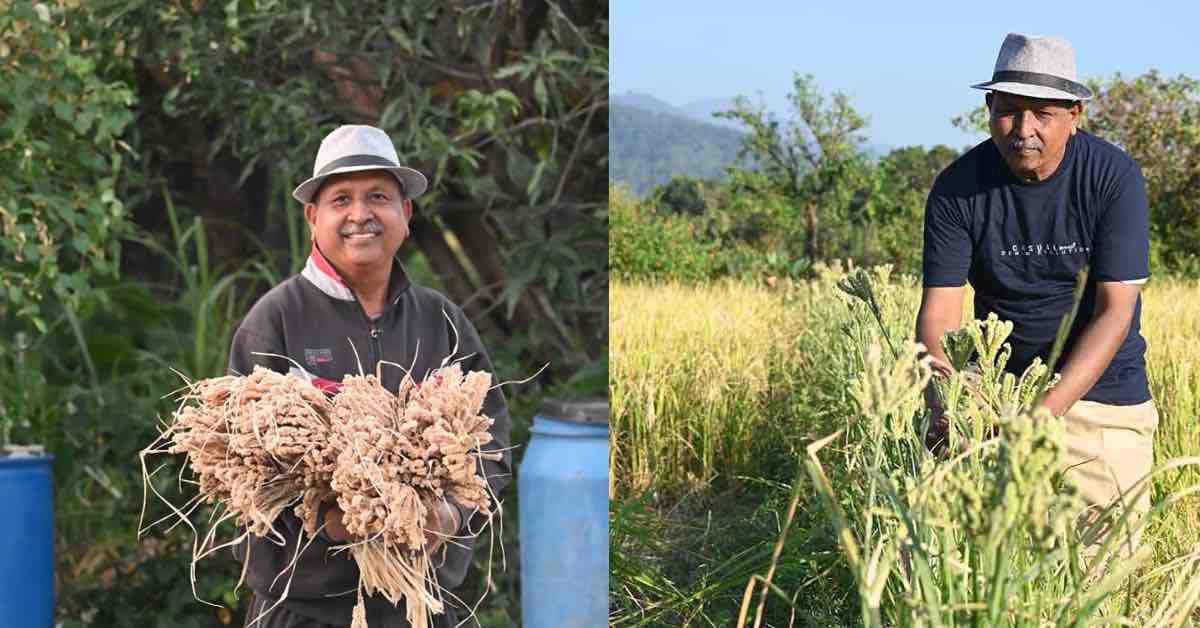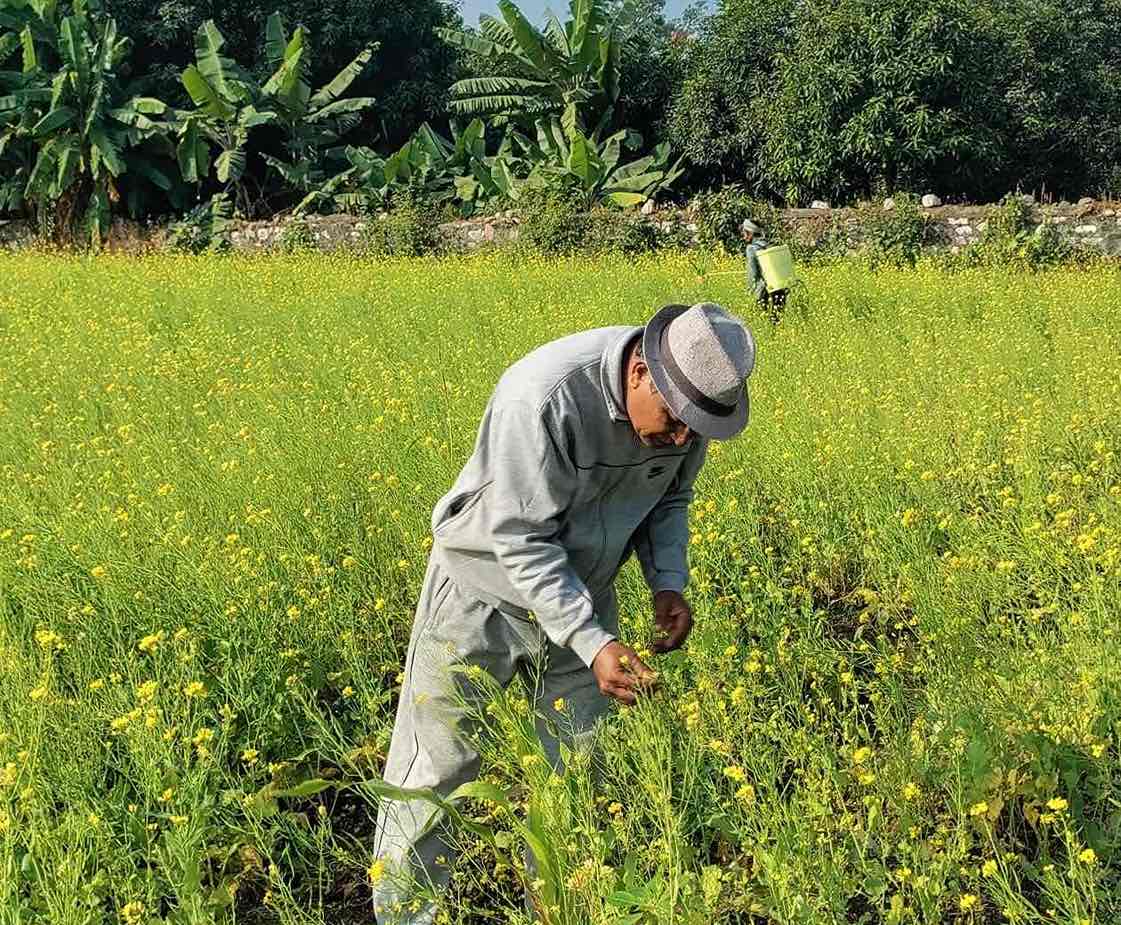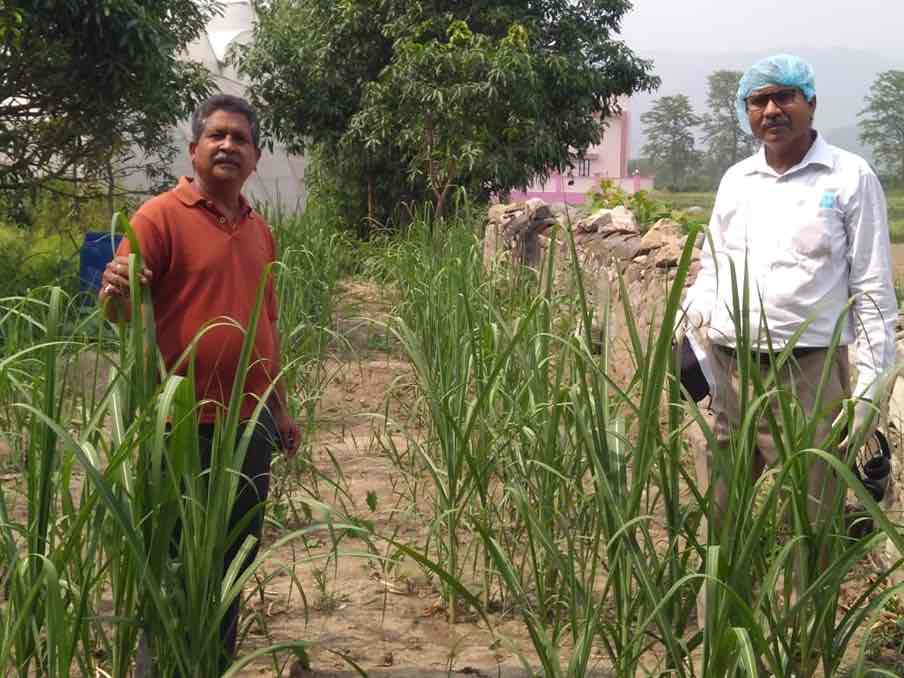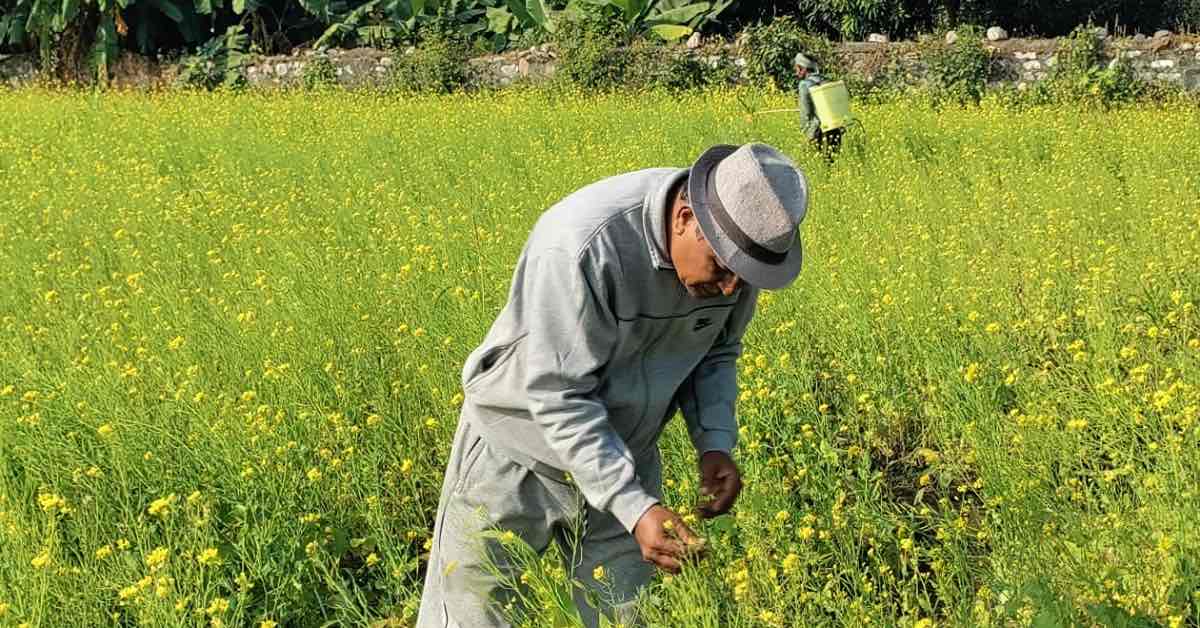In the rolling hills of Nainital, a man stands knee-deep in the soil, his hands weathered by years of toil. With every crop he nurtures, every seed he collects, and every problem he solves with nothing but ingenuity and dedication, Narendra Singh Mehra, 66, is driven by a singular belief — that farmers deserve their due recognition, and the people of this country deserve to eat pure, healthy food.
From developing a new variety of wheat that thrives in different conditions to regenerating organic sugarcane farming, Mehra has spent decades experimenting, learning, and perfecting agricultural practices. With his ingenious methods of farming, he has shown that it’s possible to grow food that nourishes both the land and the people.
“When you ask a child to draw a picture of a farmer, he will draw one that depicts the hardships of the farmer’s life. I hope to change that so the image of a farmer is that of a proud man,” he tells The Better India.
The seeds of change
Narendra Singh Mehra was born in 1959, in the village of Devla Malla, Nainital. Growing up in a family where agriculture was the way of life, he was very attached to his land and the farming community. His family, however, wanted him to get an education and settle in a big city.
“People do not want their children to become farmers. The condition of farmers is such that leaving your homeland, even if it is ancestral and you are attached to it, is the norm,” he says.

And so he did. By 1984, Mehra had studied at the DSB Campus in Nainital, where he first completed his graduation in geography, followed by a course in art and tourism. Though his academic qualifications were not directly linked to agriculture, his love for farming drove him back to his roots.
Mehra took over his family’s agricultural land and insisted on ploughing the fields himself. For years, he stuck to traditional farming methods, using pesticides to maximise yield and profit.
Creating a new wheat variety
In 2008, Mehra noticed a shift in the agricultural habits around him. He saw more and more farmers were moving towards growing cash crops like soybeans and tomatoes, giving up on wheat or grain crops. “I thought, if we continue like this, if the country continues like this, what are we going to eat?” he laughs.
At the time, he was cultivating the RR21 wheat variety, which was “a good crop”; but then something remarkable caught his eye.
While sowing his crops, he noticed some plants that looked different. That stalk of wheat looked healthier and fuller than the rest. Curious, he marked it with a red string. He was fascinated by its growth, and even though his children, who were toddlers at time, teased him, saying, “Papa is playing with grains like a child,” Mehra was undeterred. He carefully saved the seeds from this special crop, thinking it might offer something unique.

Over the next couple of years, he kept saving and replanting these seeds. He managed to gather around 8-9 kg of these desi or non-hybrid grains and sowed them on a small section of his field. Unfortunately, it did not work out as expected, but Mehra didn’t give up. He continued to collect and distribute the seeds to others, believing in their potential.
In his quest to further explore the potential of these seeds, Mehra reached out to local agricultural institutions like the Krishi Vigyan Kendra and Pantnagar University. The director at GB Pant Agricultural University, Dr SN Tiwari, was sympathetic towards farmers and supported Mehra’s efforts.
“I got information about registering the seed with PPV & FRA (Protection of Plant Varieties and Farmers Rights Act) through Dr SN Tiwari. Dr Vijay Kumar Dohare helped me send the seed to Pusa, while Dr JP Jaiswal, a wheat scientist at GB Pant University, guided me throughout the process. Dr Uma Nauliya and Dr Anjali Agarwal helped me plant this wheat in the hilly regions,” he shares, careful to credit everybody who helped him along the way.

This wheat variety, which was named Narendra 09, and was initially grown in the mountains, proved to thrive in diverse conditions. It was successfully cultivated in places like the Brahmakumari Agriculture Unit in Mount Abu, as well as in regions of Uttar Pradesh, Haryana, and other nearby states. The positive outcomes from these trials reinforced the potential of this variety to grow well in different climates across the country.
“It thrives in all conditions — mountainous, plains, and everywhere in between,” says Mehra. The individual grain count per stalk reached 50-80, far exceeding the normal 20-25 grains in traditional varieties.
Vinita Singh, a 60 year old farmer from Uttarakhand, found out about the new wheat variety after reading about Mehra in the local news circuit. She decided to give it a try and found it to be highly effective for her own farm as well.
What makes Narendra 09 wheat special?
She and her son farm the wheat on six acres of land. “The difference in the variety of wheat is that we see each acre producing 2,800 to 2,900 kgs with commercial farming practices, which is significantly more than most crops grown in the region. We grow them organically as well, and there the quality of our produce is better than many others in the area,” she says.
This new wheat variety required significantly less water than traditional crops, making it especially beneficial in water-scarce areas. With yields reaching 1,800 to 2,000 kg per acre, and sometimes even 2,500 kg, it quickly became a sought-after crop.
As time passed, people who received these grains started to sow them, and after getting good results, they started talking about them. That’s how the story began, and Mehra decided to take his discovery seriously.
But over time, he realised the harm these chemicals were causing to the soil, crops, and food. Mehra gradually learnt more about sustainable farming practices and decided to make it a part of his life.
(In Part 2, we will explore Narendra Singh Mehra’s shift to organic farming and how he is empowering sugarcane farmers.)
Edited by Arunava Banerjee; All images courtesy Narendra Singh Mehra
